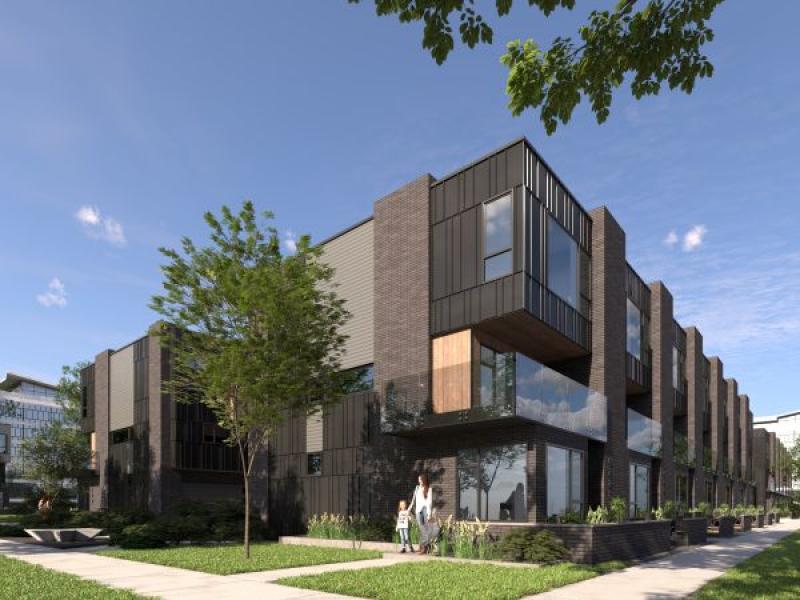
A tool created by real estate advisory Turner Drake & Partners synthesizes the pressures on Canada’s housing markets into one measurable number, with the intent of helping the industry and policy makers identify and relieve stressors in the sector.
Known as the Residential Market Pressure Index (RMPI), Halifax-based Turner Drake unveiled the tool in its Fall 2025 Atlantic Canada Newsletter. It is used to calculate a score out of 100 for Canada and its provinces based on four housing market pressures: demand, supply, rent and ownership. The higher the score, the more difficulty a homebuyer or renter faces in acquiring shelter.
Canada’s RMPI score in Q3 was 54.7. Affordability, not demand, was the biggest pressure point nationwide according to Jigme Choerab, the manager of Turner Drake’s Economic Intelligence Unit, in an interview with RENX Homes.
British Columbia and Ontario ranked as the most highly pressured provincial markets at 65 and 62.6 points, respectively. Quebec and Newfoundland and Labrador were the least pressured provinces at 45.9 and 39.8, respectively.
Turner Drake developed the RMPI this year to enable easier, more consistent comparisons of Canada’s housing markets, Choerab said.
“When we talk about crises or housing emergencies, it’s really difficult to get into the nuance of it because we’re comparing different metrics,” he explained. “So we thought (what) if we had one number that encompassed the effects of all variables.”
Affordability is Canada’s main pressure
Breaking down the four pressures in the index:
- demand compares household and population growth to the rate of housing unit completions;
- supply is how quickly unit permits are converted into on-the-ground starts;
- rent examines how quickly rents and associated costs are growing compared to real wages and income; and
- ownership measure how ownership costs are increasing relative to income.
Choerab found the demand pressure is declining nationwide as Canada’s population growth is slowing and the number of housing permits being converted to starts are moving in the right direction (though it remains sluggish, he noted).
The dominant problem currently is affordability, he observed. To tackle Canada’s high housing costs, the kind of housing that enters markets must be addressed, Choerab said: “We need more affordable homes.”
Provincial markets
What could come as a surprise to some is that Nova Scotia was ranked as having the third-highest RMPI score in Q3 at 61.6. The Atlantic province has the highest rent pressure of all Canadian provinces at a score of 24.8.
Relative to its neighbours or even across the country, Nova Scotia experienced rapid population growth over the past decade, Choerab said. That growth was particularly concentrated on the province’s capital city of Halifax. As supply and income did not keep up with population, the overall pressure rose.
British Columbia recorded the highest ownership pressure out of the provinces at 17.6 points, helping to put it in the No. 1 spot for overall pressure. Ontario was impacted heavily by supply pressure, Choerab said, as permits were not quickly being converted to starts.
Newfoundland and Labrador saw very low ownership and rental pressures. Quebec is a “relatively calmer market,” Choerab said, because the province receives a substantial amount of housing assistance.
Alberta, home to Calgary and Edmonton, was in the middle of the RMPI at fifth place. The rent and ownership pressures in Alberta were relatively mild, but Choerab noted the province is facing supply pressure. Like many provinces, Alberta’s housing industry is struggling to convert permits to starts, he said.
Governments might need to devise strategies to help developers bring more units to the market, particularly affordable homes, Choerab said.
How the RMPI could evolve
Choerab hopes municipalities and provinces will use the RMPI to design policies that help alleviate the pressures. Academics could further refine the tool, he added.
Turner Drake plans to include municipal-level data in the RMPI for a more precise look at housing markets. Choerab also expects the list of indicators to be expanded to account for factors such as affordable housing and inclusionary zoning.
The RMPI will be consistently updated and refreshed quarterly.










